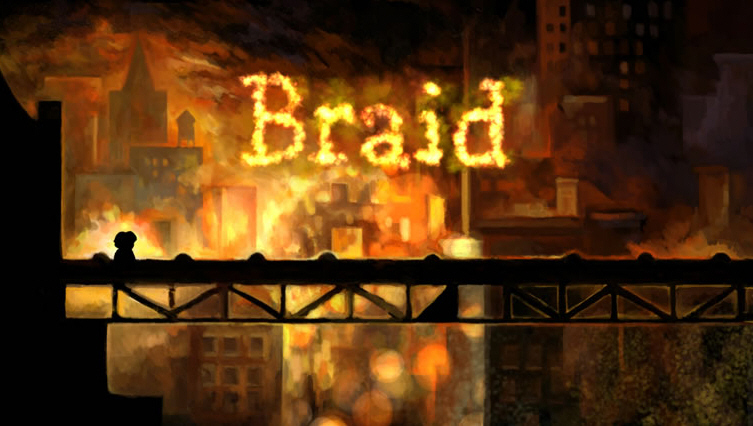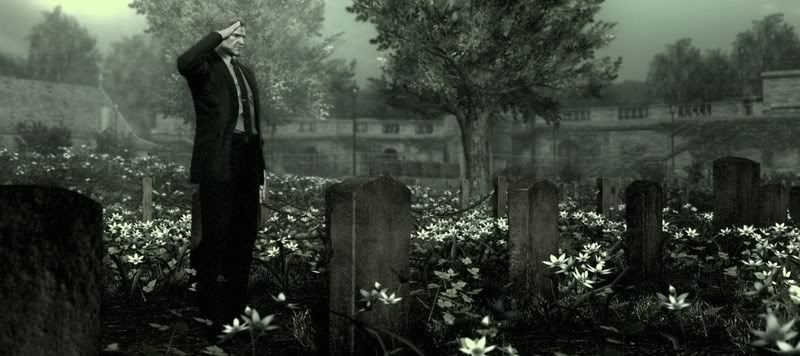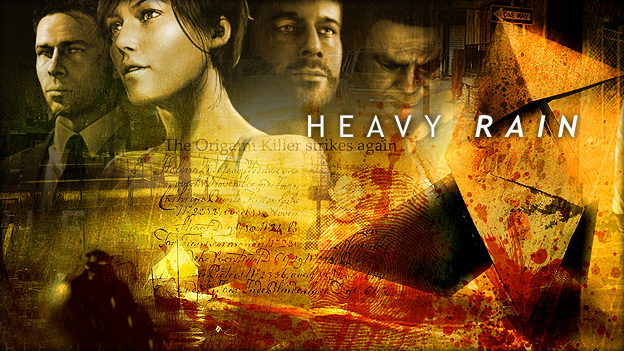 Full Review:
Full Review:
Disney Epic Mickey
Developed by Junction Point
Published by Disney Interactive Studios
for the Nintendo Wii
Released November 30th, 2010
Not the epic it hoped to be:
Never has the gaming community anticipated a Mickey Mouse game as much as they have with Disney Epic Mickey. As soon as gamers saw the cover of Game Informer over a year ago which displayed a darker style of Mickey Mouse, speculation and anticipation grew everywhere. Warren Spector and his Junction Point team promised to take Mickey Mouse into untraversed territory and turn Mickey into a video game star on the same par as Mario and Sonic. Epic Mickey brings a lot to the table but ultimately falls short in too many areas for it to be considered a classic.
The game starts out with a mischievous Mickey Mouse venturing through a magical mirror in his bedroom ultimately ending up in the workshop of wizard Yen Sid of Fantasia fame. There Yen Sid is putting the finishing touches on a land where forgotten Disney characters can live in peace created using a magical paint brush. After Yen Sid retires to his chambers, Mickey decided to add some of his own artistic touches to this wondrous world. Through his mischievous meandering with Yen Sid's brush he creates an evil entity known as the Blot and spills thinner all over the land sending the world into a spiral of disarray. Mickey escapes through the mirror leaving a blatantly obvious abyss where Yen Sid's new world once lied. Nearly a year later, Mickey is famous having made cartoons from Steamboat Willie to Fantasia. The Blot, stronger than ever, drags Mickey through the mirror and into the Wasteland. Mickey must now restore the Wasteland to its former glory and return safely home.
The story brings a unique and bizarre twist to the lore of Mickey Mouse. It's interesting to see so many Disney characters living in a world of disrepair and gloom. The characters in Epic Mickey were once huge stars of the Disney world before being forgotten in the Disney renaissance of the 90's. Familiar faces like Clarabelle Cow and Horace Horse appear as major quest characters while more notable characters such Goofy and Donald appear as frightening robots but still have their familiar charm. The most notable character included in the game who drives the entire plot is Oswald the Lucky Rabbit.
Oswald once was Walt Disney's proud mascot and superstar but Disney lost the rights to him when he and Universal split ways in 1928. It wasn't until about 70 years later, Disney got the rights back to the forgotten animated star. In the Wasteland, Oswald acts as the world's leader, looking out for all of the forgotten characters by creating a safe home for them all. Oswald creates Mean Street (his version of Disney's Main Street), OsTown (a variant of ToonTown) and most notably a recreation of the famous statue of Walt Disney pointing to the sky but with Oswald, not Mickey, holding the creator's hand. Oswald's character is well developed, acting as the jealous older brother of Mickey who wants nothing do to with him. The character of Oswald drives the game's story the entire way and provides much depth. The story and characters drove the game and kept me interested in continuing. Unfortunately, the actually gameplay of Epic Mickey had the exact opposite effect.
Epic Mickey offers a plethora of main quest missions and sidequests but none of them are much fun. Every mission consists of either finding, painting, or thinning, a certain number of objects for various characters in order to continue. It's an experience that's fun and unique at first; painting a gear to make platforms move or thinning away walls to find hidden treasure, but after awhile the missions start becoming monotonous with a lack of variety. I can safely say that, with the exception of boss battles, the same type of missions you'll play at the beginning of the game, will be the same type of missions you play near the end and throughout. When something new does come it either isn't implemented nearly as much as it should be or quickly wears out its welcome.
The 2-D Sidescrolling projector sequences are examples of the latter. The projector sequences take away the use of the brush and bring the player a pure side-scrolling experience much like the older Mickey Mouse games on the SNES or Genesis but unlike such classics as Mickey's World of Illusion, it's not fun. The projector sequences were based on various Mickey and Oswald cartoons of the past. The game does a great job of bringing these old cartoons back to life through these levels; so much so that the presentation of the levels is the only enjoyable part of it. Seeing the old Steamboat Willie boat propped up like a cardboard set reminds the player that these are Oswald's attempts of creating a false glory for himself despite being forgotten. It's very interesting to think about but it seems that they spent too much time paying homage to the past and not focusing on whether or not jumping on platforms or dodging the stage-prop enemies was actually fun. The answer is no as the layout is much too simple and requires absolutely no thought process to complete.
The projector sequences act as portals that link to different areas of the Wasteland and only by completing them can one continue their journey. The worst part is that even after completing each sequence the first time, the game gives you no option to skip these stages any other time. So even during vital missions that require you to traverse back and forth between areas, you are forced to play through the projector sequences time and time again which really takes the player out of the story.
Another area of gameplay that really leaves a blemish on the game is the playability. First of all the controls are not layed out well. Everything seems to be cluttered; A to jump of course, Z to shoot thinner, B to shoot paint, d-pad to control the camera, plus to scroll through your items, minus to use them, 1 to place the camera in back of you and 2 to go into your menu. Every button has a purpose which is fine but during the heat of battle it can be difficult to execute.
The camera is bad. When up against a wall, the camera does not know where to go and ends up placing itself in a horrendous view that leaves you vulnerable to all enemies nearby. Controlling it is no cakewalk either. Changing your thumb placement to the d-pad takes away the ability to jump therefore causing death. The camera could have been executed much better but because of its awkward placement at times the game suffers greatly.
Unlike the controls, the graphics and music were done right. The character models look great and are animated to move in the same feel as they did in their glory days of Disney. The dripping affect on Mickey is an awesome touch as well. The paint/thinner splashes remind me of the water affects of Super Mario Sunshine which definitely isn't a bad thing. The areas represent a cartoony town in dismay and showing the difference between a painted object and a thinned one is done well with a favorable art style committed to both. The backgrounds are some of the most beautiful designs I've seen in any game.
While the opening cutscene looks gorgeous in all its CG glory, I can't say the same for the in-game cutscenes. They chose an odd art style that is supposed to represent the paint theme of the entire game. It does nothing for it however, neither reminding the player of the classic style of art that Disney cartoons are known for nor providing any justice for the art style represented in the game. The game would be much better off using the CG graphics displayed in the opening cutscene.
The music is surprisingly tolerable. While every tune has a campy rhythm to it that I thought would definitely get on my nerves, they do achieve in quality. The campy style of every song is balanced by a dark portion of the song that reminds the player that this world, although cartoony in nature, is in distress. The OsTown theme is a great example to this. Dark alterations to old Disney themes such as "It's a Small World" sound awesome and definitely provide a unique take on the world Epic Mickey is trying to portray. The sound effects especially the muffled voices of the older cartoon characters and constant rolling of the projector wheel in the projector sequences are great as well.
An upsetting part of the sound is the lack of voice acting. Instead of speech, short grunts or chuckles are used to show that a character is speaking. The lack of voice acting is unnecessary and the game would have greatly benefited from the voices of the characters that created over 80 years of classic cartoons.
Warren Spector and Junction Point clearly focused more on rehashing the history and art of Disney rather than creating a gameplay experience worthy of playing. The game is all show and not much else. Disney Epic Mickey has enough content to keep a Disney fans and younger gamers content but more experienced gamers hoping to have a Mickey Mouse game that's on par with video game platform stars like Mario are going to be disappointed with this entry.
Fun: 3/5
Controls: 2/5
Lasting Appeal: 2/3
Graphics: 2/2
Sound: 2/2
RANK: D+
Controls: 2/5
Lasting Appeal: 2/3
Graphics: 2/2
Sound: 2/2
RANK: D+


.jpg)







